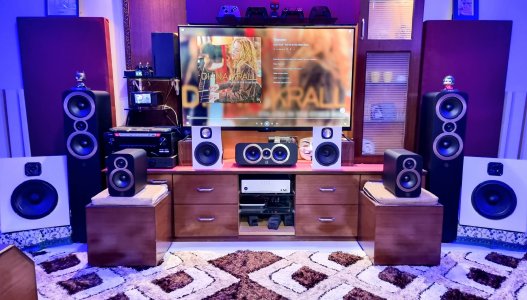amrutmhatre90
With a pair of jeans, one has to cut through holes to show some fashion. I am beginning to think you have done those mavericks act with your audio gear

am i right or am i right or am i right??!!

In my experience, firstly, not all ears are created equal.
To elucidate, I remember this one time when I was playing tracks on iTunes while chilling with a friend, initially through Airplay and then from a hardwired connection (read PC directly fed through HDMI on my computer). My friend immediately exclaimed that the music sounded much better and was inquisitive about what I'd changed. Now despite the fact that i was the one switching connections, these aural improvements were not immediately obvious to me. And this was not a solitary instance, this particular friend of mine has had quite a few listening sessions with me where I've noticed that he's much more adept at identifying aural cues than me.
I juxtapose this with the time when i took a visual pattern recognition test (it was a serious exercise for an assignment that we had) where I'd scored some 95% while a friend who took it along with me scored 5%. And while this person is neither deaf nor retarded (to clarify, he had perfect vision whereas I was the one with glasses and blind as a bat without them), his brain simply could not decipher the patterns that were obvious to me.
Now, it was not that his brain could not decipher these differences at all, once i pointed them out, it became immediately obvious. Therefore, it is something that can be learnt.
Therefore, besides the ability to hear frequencies and it's erosion over time simpliciter, perhaps there's something to do with the ability to identify aural and visual cues as well?
Having said that, and even though a proper post has been a long time in the coming and still overdue on the proper thread, i recall when i was graced with a visit from
@aeroash a month back and he'd checked out my system. I was immediately struck by his ability to identify the sonic qualities of my system accurately. After a couple of tracks, he could clearly tell
inter alia that there was some hardness in the bass around the 80-120hz region whereas the lower mids were coming across as a bit thin - both observations substantiated by REW measurements which show a spike in the 80hz-120hz region and a massive dip of around 5-10db from about 250hz to 500hz due to a room node (i hope

). However, i was quite surprised by his preference in amplifiers, attributes that he spoke of which make perfect sense in hindsight but something which never struck me in my experience with such gear until he spelt it out.
Therefore, it's not simply our imperfect hearing, inability to identify/distinguish sonic attributes etc but very much the factor of taste, especially when you know exactly what it is that one likes, that dictates how we prefer our music and as a necessary precursor, the gear for playing it.
Then, there was this video about food dyes explaining how tests revealed that attractive looking food tastes better than the identical item when presented in a much more plain Jane form.
Simply put, there are too many variables to account for in what one person hears.



